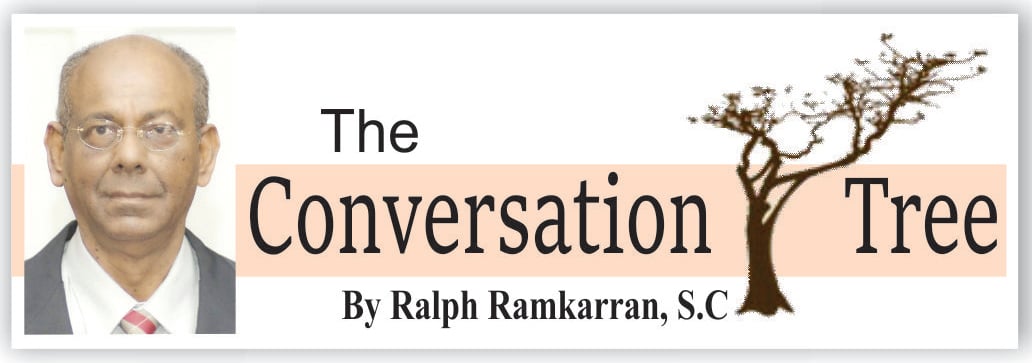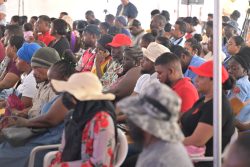Guyana has the second highest rate of suicide in the world, a higher rate of death by violence than Mexico and is at 63rd place out of 183 countries in death by road accidents. These figures are based on per thousand of population and are provided by the World Health Organisation for 2020. There is only an occasional voice of concern raised about suicides. There are no horror stories about death by violence in Guyana, as there is in Mexico.
Yesterday’s Stabroek News headlined a news report that the Commissioner of Police (ag), Clifton Hicken, laying down the “riot act,” issued stern instructions to senior traffic officers to implement strategies to reduce the sudden increase in road fatalities. Eighteen persons have died for this year as against sixteen for last year. The news report was accompanied by an impressive photograph of the Commissioner meeting with his officers in a decorated boardroom with a shiny, rectangular, horseshoe designed, conference table, presumably intended to impress the public.
Since more people die by suicide than by violence or road accidents, it would be interesting to compare the figures spent by the State on curbing deaths by suicides, road accidents and violence. I do not have those figures and they might be spread across several agencies. For example, the budget, if any, in relation to suicide prevention would most likely be found in the Ministry for Social Services, while the budgets for road traffic and crime resulting in deaths would be located in the Ministry of Home Affairs. My guess is that suicide prevention gets the least, while road traffic is allocated a meagre amount in relation to crime resulting in deaths. But while I accept that I could be wrong, I hardly doubt it.
I am not certain about the basis on which budgetary allocations are decided in relation to these matters, but I suspect that it might be based on the degree of criminality associated with each, rather than their social consequences. Suicides are not criminal offences and prevention probably attracts the least resources. Road traffic is associated with a lower degree of criminality than violence and, I believe that it is thereby considered as a stepchild to the Criminal Investigation Department. Had the deciding factor for resource allocation been the number of deaths, suicide prevention would have attracted the largest amount, death by violence the second largest and road fatalities the third largest.
Quite apart from the dilemmas posed by resource allocation, innovative funding ideas combined with already tried and tested approaches are worth examination by the Government in relation to road traffic and suicides. Sometime ago I pointed out that without fanfare and publicity the Government funds a significant number of volunteer organisations that engage in providing assistance or services in different areas. These organisations quietly and diligently go about their work to great effect and each year attract the Government’s support. One area that I am familiar with is legal aid. I know that the Government also provides assistance to Help and Shelter. Despite the valuable work of these civil society organisations, they get little publicity and almost no public recognition, unlike the vocal civil society organisations that obtain no Government funding but engage in activities of a nature that attract publicity.
I have written on this issue and made this proposal before. But I think that it is important enough to utilise the publicity relating to the unfortunate situation regarding road fatalities to repeat these views. Both suicide prevention and road traffic constitute areas that can be successfully targeted by the Government for civil society engagement. The success of the Government in the civil society areas which it funds, without interfering in the operations of the organisations, is a model which it can adopt to promote civil society organisations in suicides as well as road traffic, with expansive mandates and with staying power.
Those who volunteer in the type of organisations that provide services and are partly funded by the Government, obtain their success and staying power by working quietly but relentlessly, battling ceaselessly with officialdom, failing down, getting up, dusting off and continually plodding forward. All those who are engaged in these efforts are aware of the herculean tasks that are necessary in promoting programmes and obtaining funding. But many confront these challenging obstacles and keep their members motivated.
I am convinced that Government initiatives to tap the vast resources of Guyanese goodwill to promote the establishment of civil society organisations to take on the tasks of road traffic and suicides and provide them with adequate moral and material support will show results. A Police only approach to road traffic is not enough. A Ministry of Social Services only approach to suicide prevention is not enough.
Road traffic issues have recently attracted attention due to spectacular accidents which have taken the lives of many young people due mainly to speed driving under the influence of alcohol. It is extremely difficult for the Police alone to make an impact without the assistance of the public.
(This column is reproduced with permission from Ralph Ramkarran’s blog, www.conversationstree.gy)








